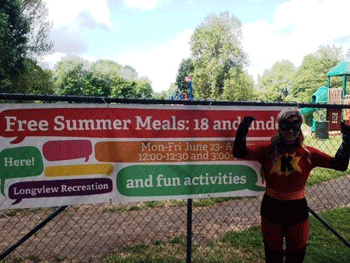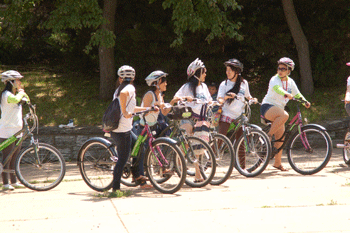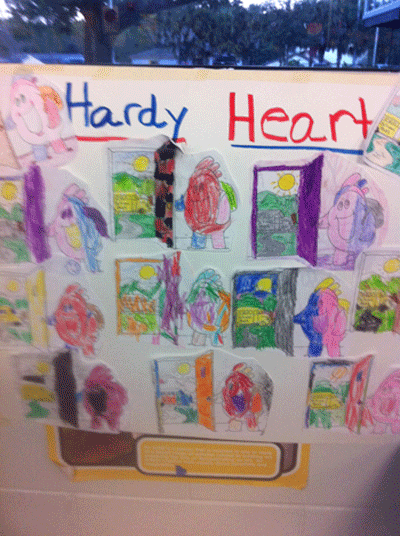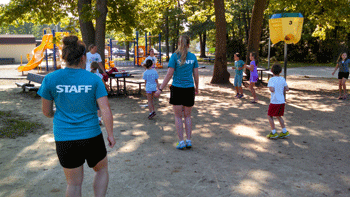One of the most critical times of the year to keep children healthy is during the summer, when many children may not have access to healthy food and may not be as physically active as they are during the school year. Providing a nutritious meal to hungry kids is an important way to ensure that they are able to reach their full potential both in and out of school.
 Over 21 million low-income children receive free or reduced-price meals during the school year to help them meet their daily nutrition needs — but only three million of these children are getting these meals during the summer, making the work that local parks and recreation agencies do to fill the gap during out-of-school times that much more critical.
Over 21 million low-income children receive free or reduced-price meals during the school year to help them meet their daily nutrition needs — but only three million of these children are getting these meals during the summer, making the work that local parks and recreation agencies do to fill the gap during out-of-school times that much more critical.
The Summer Food Service Program (SFSP), a federally funded, state administered program, enables parks and recreation departments and other entities the ability to provide free, healthy meals to children and teens in low-income communities. Parks and recreation departments often maximize their programs by pairing nutrition education with physical activities for a comprehensive approach to improving a child’s health.
With summer quickly coming, you may be putting the final touches on your activities, camps and plans for serving meals during the summer months. While you are at it, you should also be preparing to advocate to your local and federal elected officials about your summer meal programs and talk to them about the importance of these programs and why they are so valuable in the community.
Here are three key points that you can communicate:
1. Kids get much more than a meal
The outdoor activities and educational enrichment programs provided by parks and recreation departments can help improve a child's physical health and contribute to his or her intellectual, emotional and social well-being.
physical health and contribute to his or her intellectual, emotional and social well-being.
The Saint Paul, Minn., Parks and Recreation Department provides enrichment programming at many of its meal sites. Activities such as art, cooking, science, theatre, special-themed event days, indoor and outdoor games and sports are offered. The meals are served before and after the summer programming, and are a part of their after-school programs during the school year. This gives young people plenty of time to eat, socialize and participate in a variety of activities. Parents who seek free or low-cost quality programming recognize the value of what is offered and consistently send their children to these programs. Many youth go to the sites because of the relationships they develop with the staff as well as the fun and varied programming.
2. The local economy gets a boost
When cities participate in federally funded meal programs such as the Child and Adult Care Food Program (CACFP) and SFSP, the revenue  provided by these programs can help boost the ocal economy. In addition, parks and recreation departments that offer after-school programming and participate in the CACFP can move straight into serving summer meals by also participating in SFSP. This diminishes the amount of administrative paperwork required to operate both meal programs — and, if a site is providing programming through the after-school meal program, they can easily transition to providing that same programming during the summer.
provided by these programs can help boost the ocal economy. In addition, parks and recreation departments that offer after-school programming and participate in the CACFP can move straight into serving summer meals by also participating in SFSP. This diminishes the amount of administrative paperwork required to operate both meal programs — and, if a site is providing programming through the after-school meal program, they can easily transition to providing that same programming during the summer.
In 2014, the Montgomery County, Md., Department of Parks reached over 8,000 young people in five of their largest youth-serving programs. They have seen success in establishing a new summer program, Food, Fun and Fitness, which pairs drop-in physical and artistic activity with free meals for children under 18. This program has not only benefited the children in the area but has resulted in a positive economic outcome for the community.
According to the 2010 U.S. Census, more than 20,000 kids under 18 live in poverty in Montgomery County. During the summer of 2014, the department of parks was able to serve 75,728 snacks and meals to these children. The county estimates that meals and snacks served through USDA meal programs like Food, Fun and Fitness have a yearly positive economic impact of over $600 per child for families that take full advantage of such opportunities.
3. A safe environment is established for kids
Parks serve as public spaces for recreation and civic engagement, and can help improve quality of life in cities. When parks and recreation agencies provide summer meal programs for children, they are also providing parents with peace of mind; parents can rest assured knowing that their child is in a supervised and safe environment, often in their own neighborhood.
that their child is in a supervised and safe environment, often in their own neighborhood.
In Philadelphia, a city that serves nearly one million meals each summer, the Parks and Recreation Department operates “playstreets” in conjunction with their meal program. Playstreets are small, residential streets that are blocked to traffic during weekdays between 10 a.m. and 4 p.m. These temporary neighborhood “parks” provide children a safe place that is close to home where they can play and enjoy a healthy meal during the summer.
NRPA has resources to help you advocate including a toolkit that can help you plan and host elected officials at your summer meal sites so that they can see, firsthand, the impact the programs have on the community.
What do you think is important to communicate about summer meal programs served at park and recreation sites? Share in the comments below.
A version of this blog also appeared on the National League of Cities’ blog CitiesSpeak.
Kellie May is NRPA's Senior Program Manager.
Jamie Nash is Senior Associate of Benefit Outreach in the National League of Cities’ Institute for Youth, Education, and Families.

